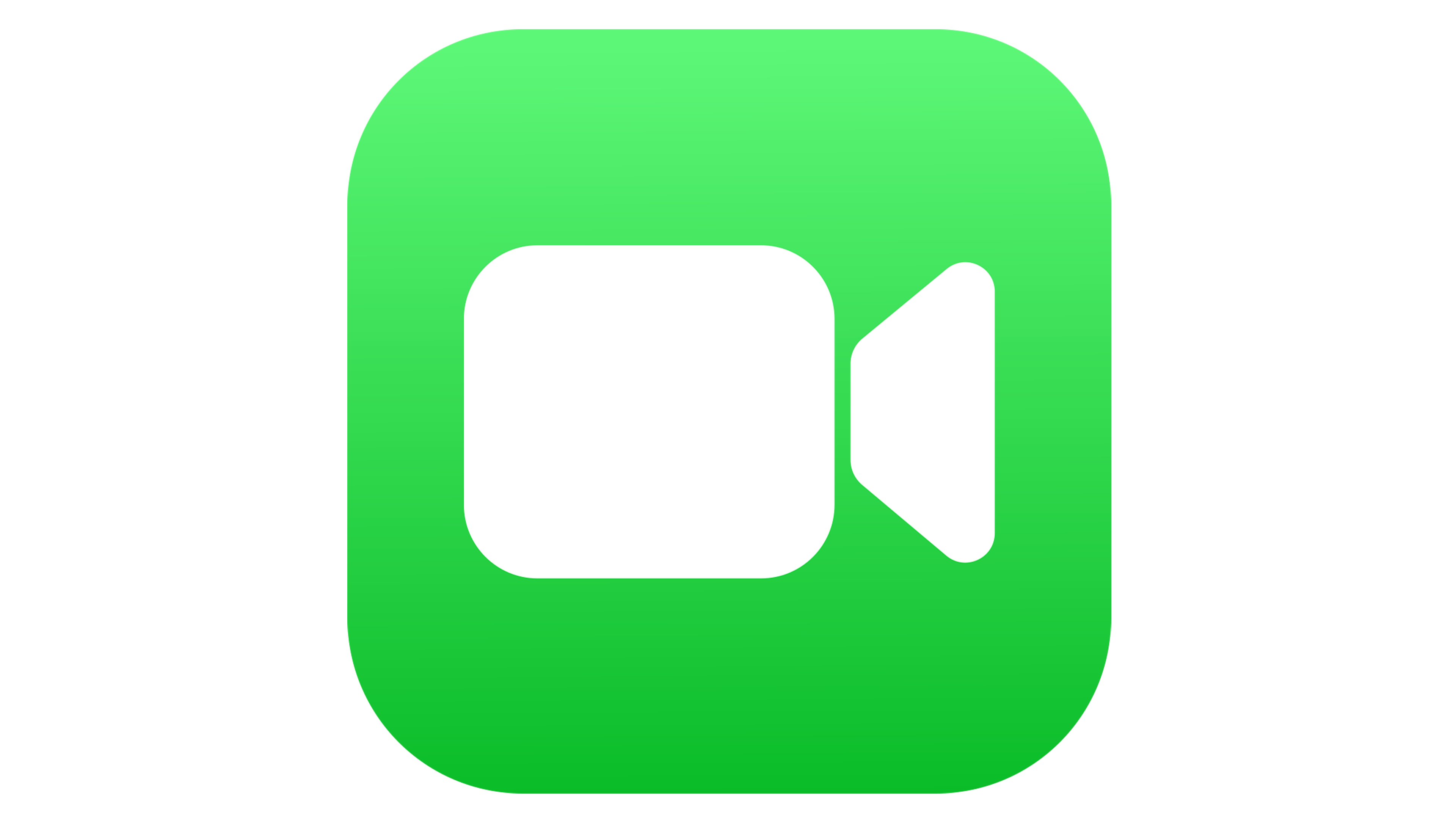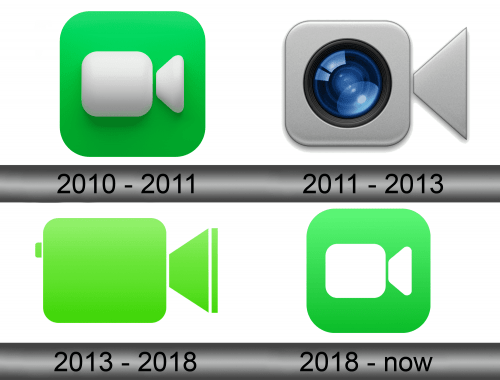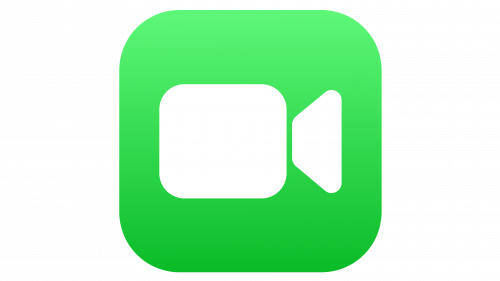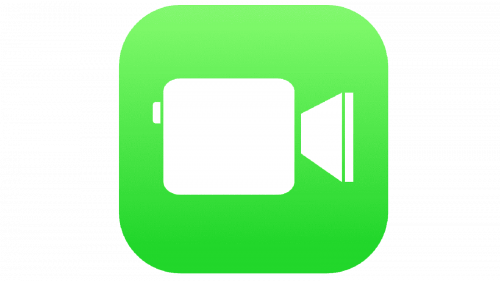FaceTime Logo
FaceTime is the service developed by the company Apple primarily for their products – such as iPhone and Mac. The primary function is to allow users to chat with one another using the frontal cameras on their devices. It’s since become a common, fast and more expressive way of talking compared to the usual calling.
Meaning and History
The service was released in the year 2010. It’s now available on iOS and Mac, where Apple tried to use FaceTime to supplant Skype and similar services that profited off visual calls. The name reflects this primary function, and it’s actually made it into the common speech, where it now means calling someone using the camera.
2010 – 2011
The first logo was a green square with rounded angles. Notably, they had a lot of shading and illumination on it, which was the fashion of the time. In the middle was a white camera image – a white rectangle with a trapezoid floating immediately to the right of it. It acts as the lens here.
2011 – 2013
In 2011, the icon was remodeled. Green became a realistic metal covering with solid frames on the edges. Additionally, the camera itself was made into a metal, and it was styled as a relief on the otherwise grainy surface of the logo. Weirdly, they put the lens onto the rectangle, which was supposed to be the many body of the camera.
2013 – 2018
In 2013, the 2010 design returned, but was somewhat remodeled.
Firstly, the haphazard lighting effects were reworked in favor of a simple gradient. Secondly, the details on the camera became more pronounced: the lens-piece received a stripe close to the lens proper, and there was now a ‘shoot’ button on the back of the camera body.
2018 – today
In 2018, the new details were removed, and the angles notably became more round in comparison to the previous attempts. Additionally, the color green was now paler and less saturated, while the gradient never went anywhere.
Emblem and Symbol
The Mac icon was a bit different. While everything above was made as icons for the iOS FaceTime apps, Mac still used them. However, almost every variant was given a little white circle next to it. In the middle of these circles were green, old-fashioned handset phones.
















